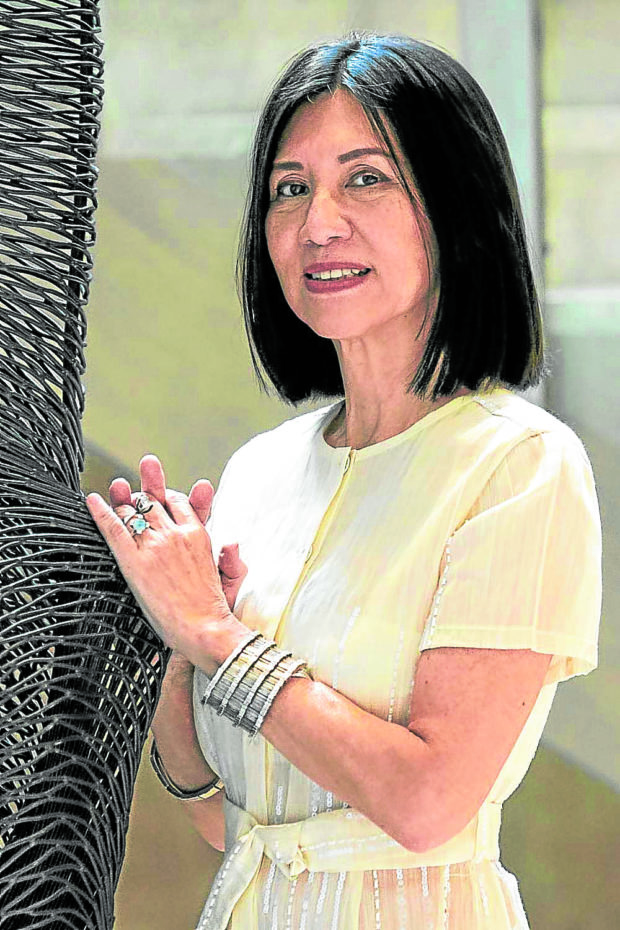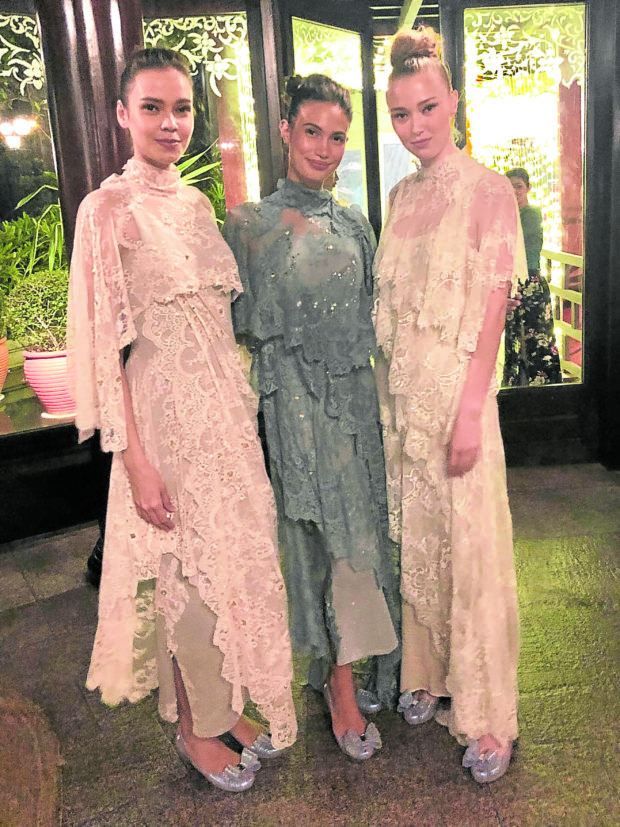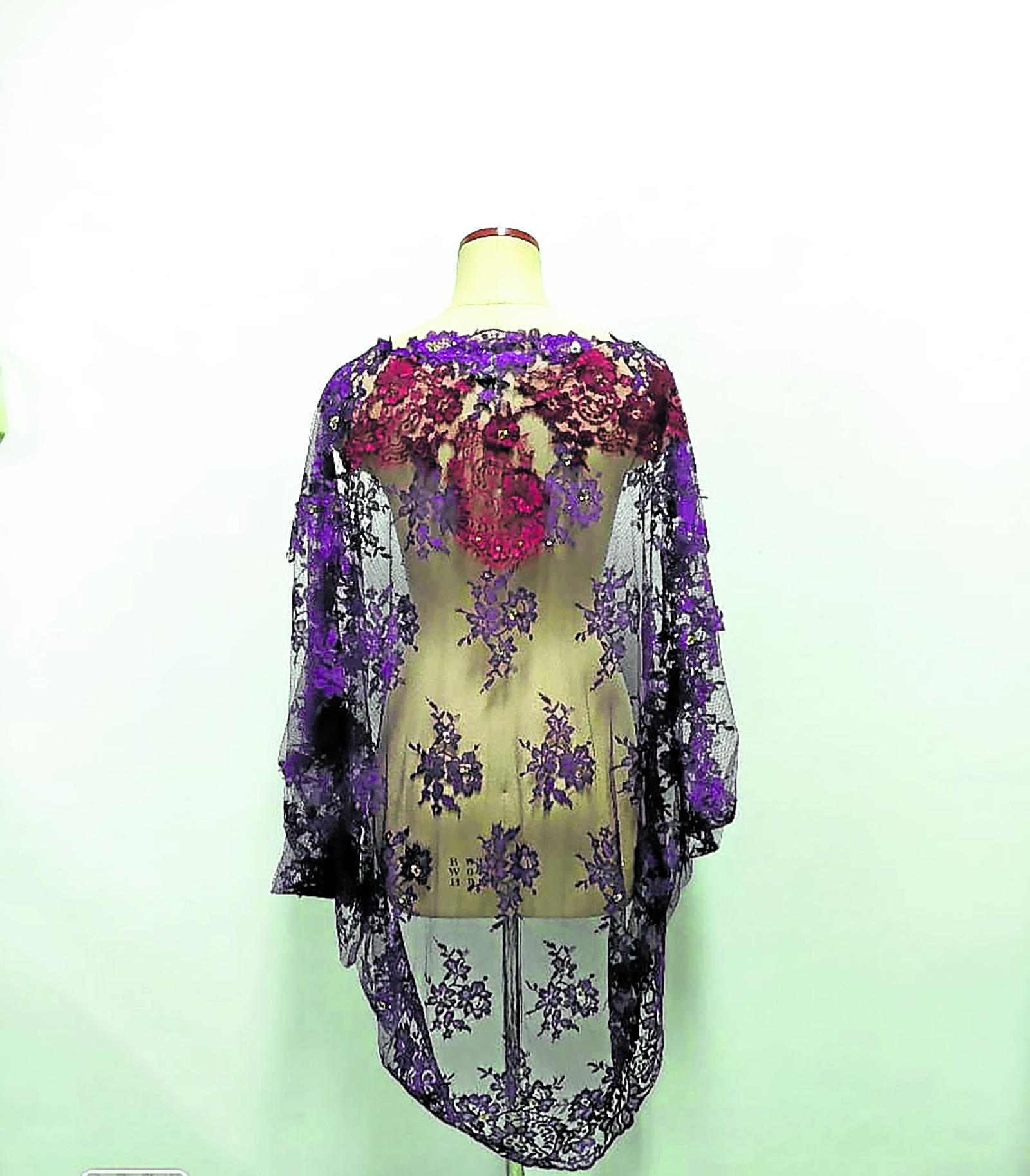
When the lease of her namesake store at Greenbelt 5 expired in September 2020, designer Lulu Tan-Gan pondered retirement. Yet, she felt she couldn’t stop working. “Retirement doesn’t mean closure. You merely slow down and make a transition into something else,” she says.
Known for her crafts-based designs from knitwear to crochet and piña, Tan Gan has been focusing on lace draping, which she calls “lace sculpting.” Through the years, she accumulated laces from her trips to Europe.
In 2013, she started creating subtly sensual gowns with lace. To add more body to her gowns, knitwear served as the foundation garment under the lace.
“I sew lace only on certain parts of the knit gown which allows the wearer freedom of movement. The effect is to make the lace move fluidly like the Grecian dresses,” she says.
Her latest collection consists of pure lace, long cardigans and tops. With a concept in mind, Tan-Gan swathes the lace onto a body form and pins it. She looks into the fabric’s folds and falls that will give it a shape. The draping transforms the loose lace into a desired look. She explores design possibilities through combinations of color and texture to create collage patterns.
Happy accident
“There are many ways to innovate if you use your hands. A flat fabric becomes two-dimensional or three-dimensional as you move it around. This is sculpting, which is not in the books. You manipulate the fabric until you find a happy accident. Innovation starts with the material,” she explains.
The wearer will appreciate the versatility of Tan-Gan’s styles. A lace top can be worn as a bolero or it can be adjusted to create a graceful swag on the back. Worn with a belt, the same top can be pulled up into a blouson.
“It takes an adventurous customer to wear these tops because they need explanation,” says Tan-Gan. In pop-ups, she demonstrates to customers how a lace number changes its looks by playing around with it. “The easiest way to change the look is by using a different inner wear such as piña or knits.’’

In most interviews, Tan-Gan will always revert to her philosophy of artisanal or crafts-based design. As a house designer for SM in the late ‘70s, she handled its knitwear label called Elle. She worked with weavers from Manila, Cavite and Baguio who produced knitwear using traditional hand looms.
Sustainable
Tan-Gan wanted to elevate the crafts into fashion. “The crafts were not appreciated then. I did not make clothes that looked like a handicraft. Fashion is about change. It follows trends. Design keeps crafts relevant,” she explains.
Back then, the weavers were accustomed to making simple, baggy sweaters and cardigans in basic colors and simple patterns. The designer patiently taught the weavers how to use vibrant-colored cotton yarns, inject new patterns, weave jacquard (complicated designs with large repeats) and mix different textures such as animal skin.
Unwittingly, Tan-Gan was fostering sustainability through knitwear decades before the fashion industry became conscious of its environmental impact. She maintains that there was no wastage in knitwear since the garment was woven into shape, thus leaving no fabric scraps. There was less carbon footprint since electrical consumption is not required as the weavers used traditional handlooms.
Tan-Gan’s talent caught the attention of the Center of International Trade Expositions and Missions (Citem). Over 40 years ago, it started to promote Filipino fashion by pairing eight designers with manufacturers to create a collection for Europe.

However, Tan-Gan’s partnership with an assigned manufacturer didn’t work out. The manufacturer was accustomed to mass-produced knitwear in huge volumes. It found Tan-Gan’s knitwear designs too complicated since they were handmade and her small volumes were unfeasible.
Tan-Gan went on to work with her weavers. “Though I was employed, I worked after my SM hours, staying up till midnight producing designs,” recalls Tan-Gan. Her knitwear was sold in boutique chains in the South of France, Montreal, Sydney and Florida.
In 1981, she joined the Pret a Porter Exposition Fashion Fair (now What’s Next) in Paris.
“The Europeans appreciated artisanal knitwear then while Filipinos still took our crafts for granted,” says Tan-Gan.
Giving back
When retail heiress Tessie Sy-Coson, then head honcho of SM’s merchandising, saw Tan-Gan’s fashionable knitwear, she invited her to be a consignor at the store’s Boutique Square for local designer labels. The Lulu Tan-Gan label was launched.
By the turn of the millennium, many weavers sought better-paying jobs in the Middle East while others retired. Tan-Gan ventured into designing contemporary piña garments in 2005 while maintaining some of her knitwear business.
She opened a store at Greenbelt 5 in 2008, presenting her artisanal designs using pineapple fibers and fashionable knits.

“I felt it was time to give back. I wanted to do something local, yet I didn’t want to put a lining under the piña. This time, the knitwear became the inner wear,” says Tan-Gan.
The use of translucent fabrics has since become one of her signatures. In the aughts, she combined European lace with knit gowns. From a distance, they looked like a whisper of cool white or pastel froth. Up close, intricately embroidered laces are set in strategic parts of the gown.
Tan-Gan’s recent collection of lace shows that this gossamer fabric isn’t just for peignoirs and wedding gowns, but can be fashion-forward outerwear.














































